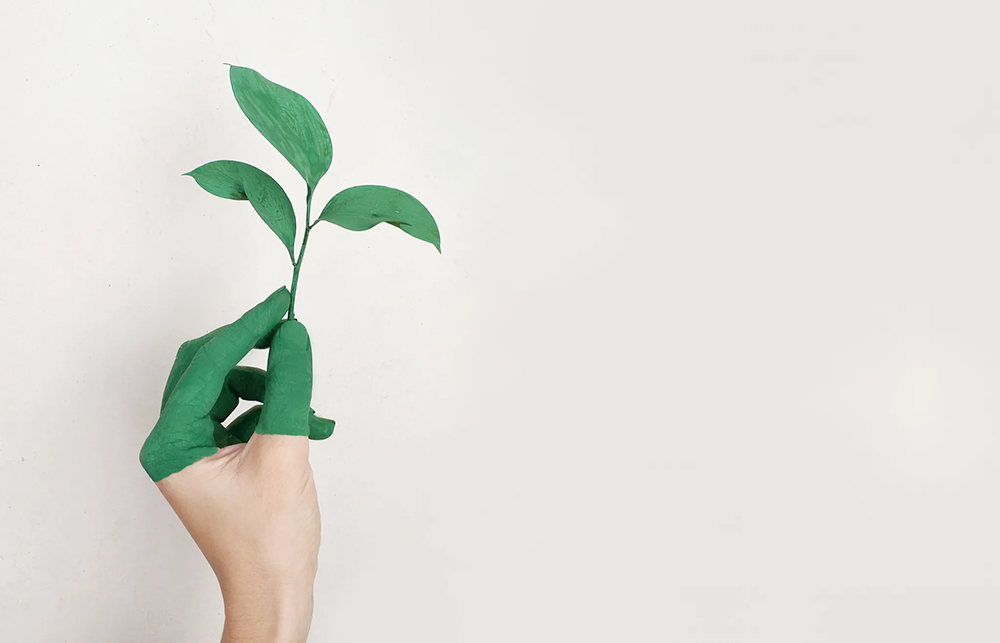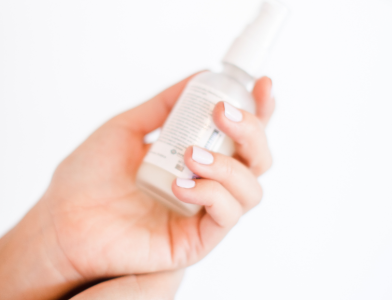If you’re anything like me, you probably heard the phrase “clean label” and thought “what the heck is that?” Clean label is a buzz word that I first heard while working as a toxicologist in the food industry back in 2012. In general, clean label products have a simple, short, and easy-to-understand ingredient list. It started with the food industry but is now firmly rooted in the cosmetics industry too with the clean beauty movement. The clean label movement is consumer-driven and demand for products with healthier ingredients will continue to rise as public knowledge increases, which is awesome! Knowledge is power and people are looking to avoid synthetic ingredients and desire more natural ones.
As someone who has suffered with hormonal imbalances for most of my life it’s critical that I reduce my toxic burden as much as possible. Not only are women susceptible to endocrine disruption, but so are boys, girls, and men because, after all, we all have delicate endocrine systems. Cleaning up our products is not only beneficial for us but also the environment, which also effects us because we are all connected.
1. Clean label movement advocates “better for you”
The idea behind the clean label movement is to simplify and reduce toxic burden, but we need to know that this is not a government-regulated term and manufacturers can slap it on any product. Generally, clean labels seek to avoid ingredients contain compounds that accumulate in the body, which means that they’re not being detoxified or removed and could potentially have long term negative health effects. Folks interested in health and wellness are definitely driving this movement and endocrine disrupting chemicals like phthalates and parabens have been among the first to be removed from cosmetics and personal care products. But educate yourself on the ingredients that should be avoided so you can discern which products are clean enough for you.
2. Clean label movement seeks transparency
Consumer research has shown that natural ingredients and environmental impact now outrank brand recognition and product descriptions according to the American Oil Chemists’ Society. This means that consumers are emphasizing that companies disclose their business and sustainability practices in addition to providing safer and healthier products. What we put on our bodies will eventually go back into the environment in some form and affect our food, air, and water so it’s also important to know if a company’s practices are posing a threat to environmental health which will, in turn, affect our health. It’s a never ending cycle.
2. Clean label does not mean organic
A common misconception is that clean label means that the product is organic when it fact the two terms are totally separate. Organic labeling is regulated by the US National Organic Program where products can be classified as 100% organic, organic, or made with organic ingredients, which are all different. If you’re interested in a “100% organic” product it must have been produced with certified organic ingredients and processing aids. An “organic” product contains 95% certified organic ingredients and the other 5% must be on the allowed list of ingredients for organic products. Finally, “made with organic ingredients” means that the product contains 70% certified organic and 30% allowed ingredients. So you can see that safety is not mentioned at all with organic certification, but we know that organic products means no GMO or synthetic ingredients or pesticides are allowed, which is generally regarded as being safer and healthier.
3. Clean label is not the same thing as 100% safe
Just because a product is classified as clean label does not mean that it’s 100% safe for all people under all circumstances because people will react differently to products. Cosmetics in the US are not regulated for safety and it’s the responsibility of the manufacturer to check for safety. This has caused a lot of uproar with consumers who seek transparency and trust. Furthermore, “cleanwashing” is becoming more prominent as the clean label market grows and is a play on the term “greenwashing” which basically means that products are marketed as being more natural and safe when they’re not. The key is to educate ourselves to know which ingredients we should avoid based on scientific evidence and find brands that we trust.
4. Clean label does not mean 100% natural
Some products claiming clean labels still contain synthetic materials that have been deemed safe by the cosmetics industry so clean label does not mean chemical free either. If you’re looking for a truly natural product then I recommend checking the label for plant extracts and essential oils. But be cautious of how much lavender and tea tree oil you’re using since they’ve been linked to premature breast development in girls and boys (Journal of Clinical Endocrinology and Metabolism, 2019). I mention extracts because these tend to be whole extracts from the plant which are complex mixtures instead of a single purified chemical. The reason this is important is because the more complex the mixture, the lower the concentration of each ingredient which means a lower toxic burden of each component in general.
So that’s my toxicologist’s take on the clean label movement. I’d love to know if you’re into cleaner products and if you have any questions please leave a comment below!



